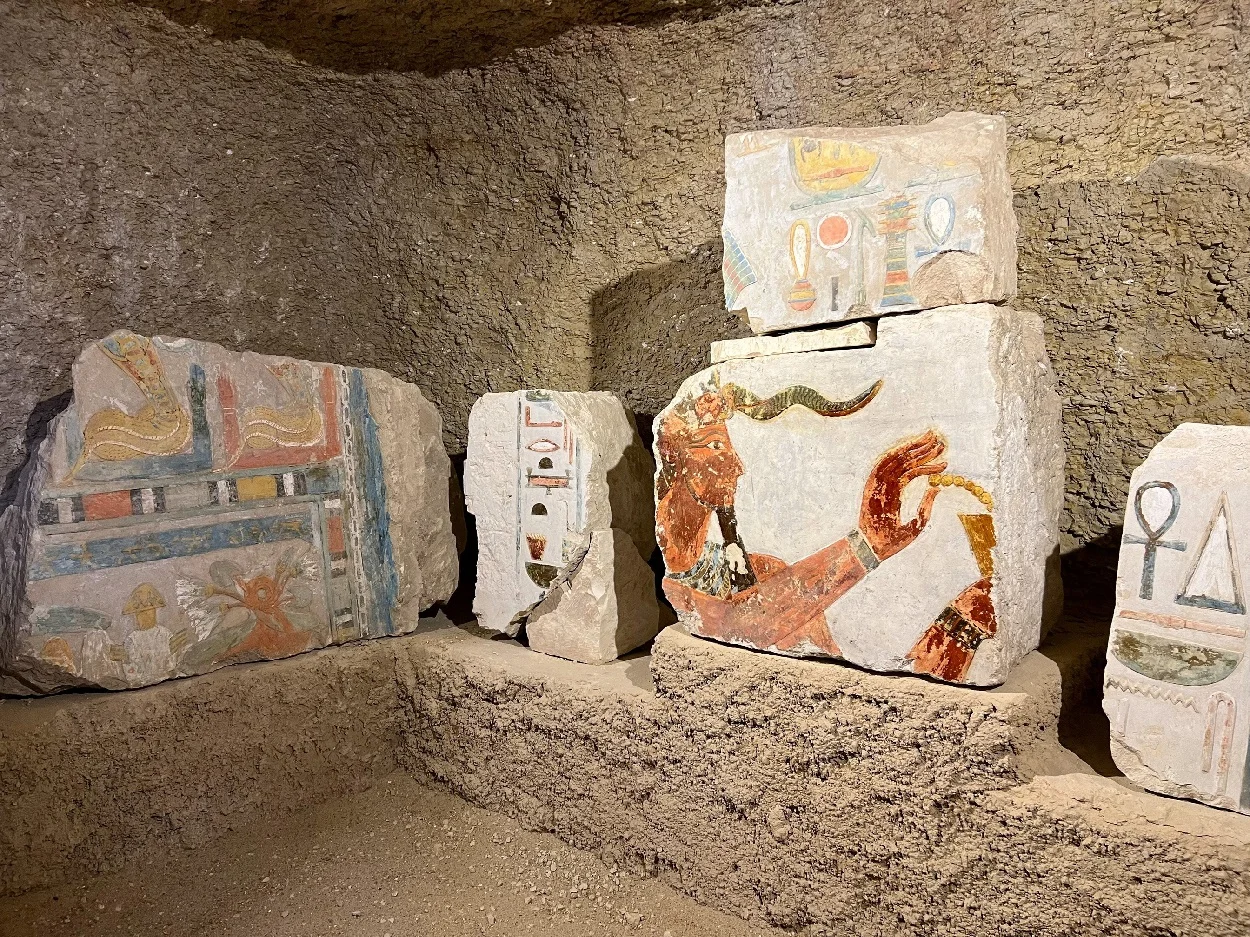Archaeologists excavating at Deir el-Bahari in Luxor, Egypt, have uncovered architectural elements that once belonged to the Mortuary Temple of Queen Hatshepsut.
The Mortuary Temple of Hatshepsut, also known as Djeser-Djeseru (meaning “Holy of Holies”), is a large temple complex constructed in the 15th century BC during the reign of Queen Hatshepsut, the sixth pharaoh of the 18th Dynasty of Egypt.
The temple consists of a series of grand terraces connected by ramps, which archaeologists suggest was influenced by the adjacent Temple of Mentuhotep II of the Eleventh Dynasty.
Excavations near the temple causeway have uncovered architectural elements featuring remarkably well-preserved reliefs and carvings, with their vibrant polychrome paint still intact.
According to a press statement issued by the State Information Service of Egypt, the findings provide valuable insights into the transition from Egypt’s Middle Kingdom to the golden age of the 18th Dynasty, as well as the burial practices, artistic achievements, and the significance of Queen Hatshepsut’s temple as a cultural and historical landmark.
Mohamed Ismail Khaled, Secretary-General of the Supreme Council of Antiquities (SCA), said: “These remarkable blocks retain their vivid colours and offer a glimpse into the artistry of the period”.
Queen Hatshepsut
Hatshepsut was the daughter of Pharaoh Thutmose I and Queen Ahmose. Following the death of her half-brother, Thutmose II (who she married), she assumed the role of regent for her young stepson and rightful heir, Thutmose III.
However, rather than merely acting as a caretaker of the throne, Hatshepsut gradually consolidated power and, within a few years, declared herself pharaoh.
Following her death in 1458 BC, Thutmose III ordered a systematic campaign to erase her memory in an attempt to restore the traditional male lineage of kingship.
Header Image Credit : State Information Service
Sources : State Information Service





